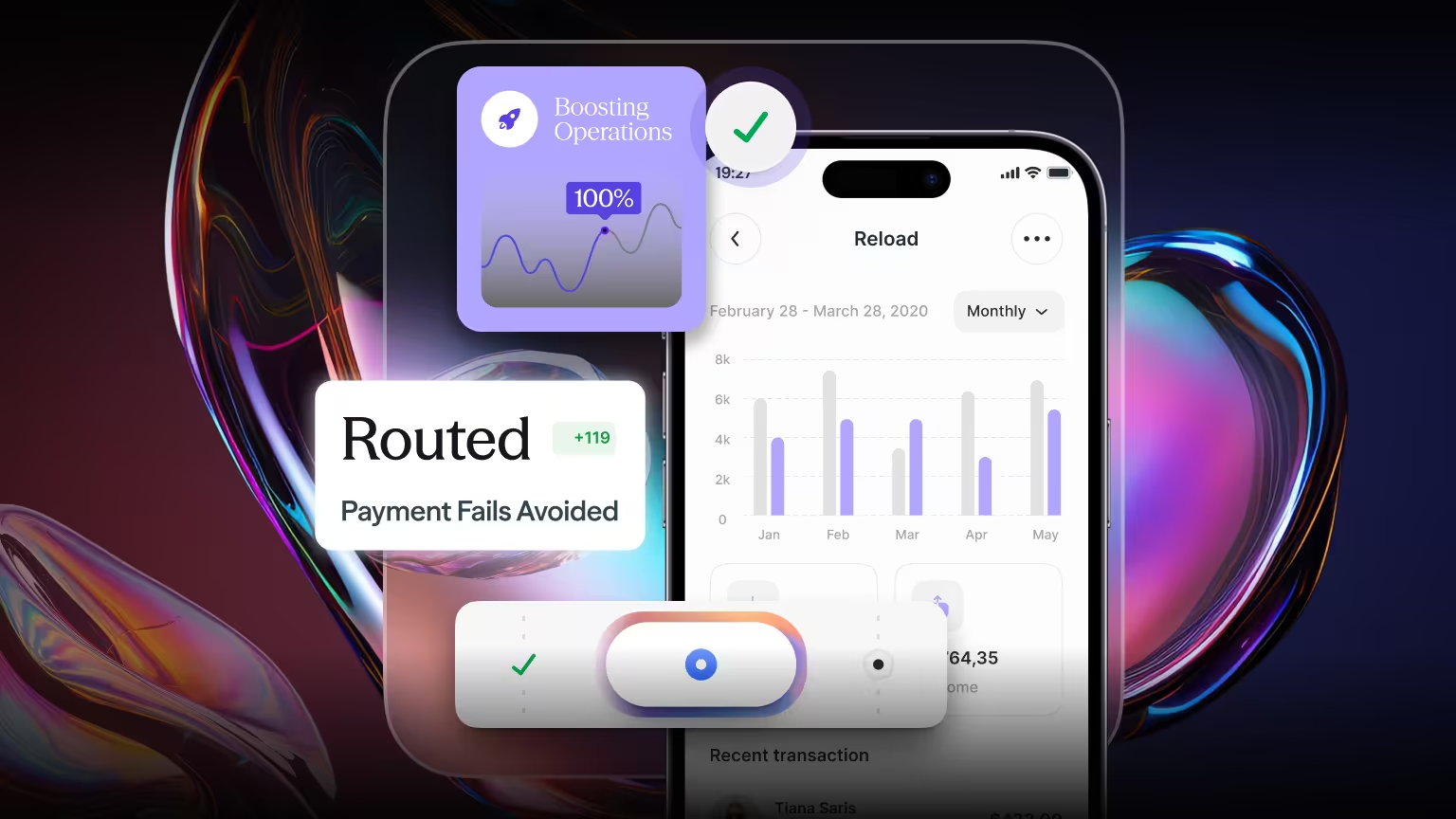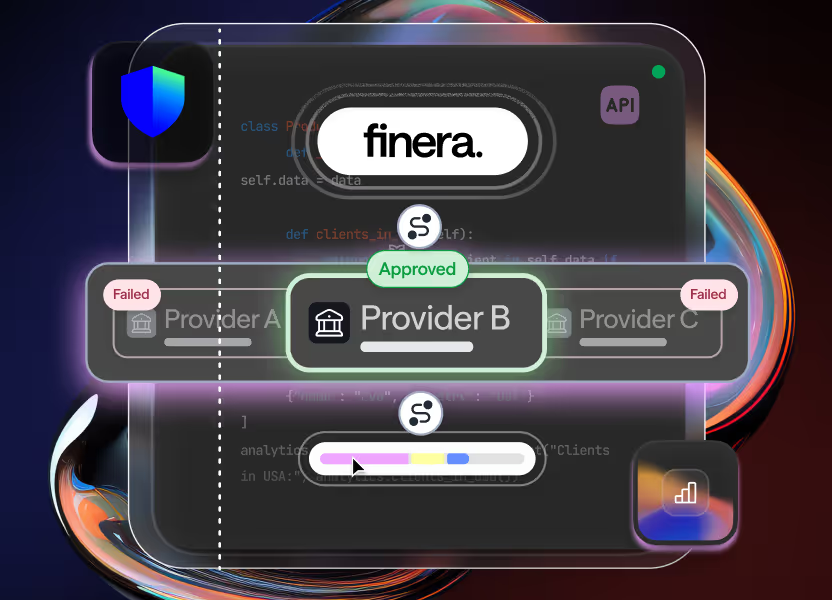How Smart Routing Helps Retailers Reduce Cart Abandonment
Smart routing reduces cart abandonment by boosting approvals and improving user experience.

Cart abandonment remains one of the biggest challenges for online retailers. According to the Baymard Institute, the average global cart abandonment rate sits around 70%. For every ten shoppers who add an item to their cart, seven never complete the checkout. While many factors contribute to this, from unexpected fees to complicated checkout flows, one often-overlooked cause is payment failure.
When a customer’s payment is declined for reasons beyond their control, it’s not just one sale that’s lost. It is a blow to customer trust and lifetime value. This is where smart payment routing comes in, offering retailers a way to significantly improve payment approval rates and reduce friction at checkout.
Understanding Smart Payment Routing in E-commerce
Smart routing, also known as intelligent payment routing, is a payment orchestration feature that dynamically directs each transaction to the optimal payment processor or acquirer based on real-time performance data.
Instead of sending all transactions through a single gateway, smart routing evaluates multiple factors, such as payment method, issuing bank, currency, geography and historical approval rates to determine the path with the highest likelihood of success.
For retailers, this means reducing false declines and ensuring customers can pay using their preferred method without unnecessary friction.
Why Payment Failures Lead to Abandonment
Retailers often invest heavily in UX design, product pages, and marketing campaigns to get shoppers to checkout. But if the payment process itself isn’t optimised, those investments go to waste.
Common causes of payment-related cart abandonment include:
- Declines from a single acquirer with suboptimal performance in certain regions.
- Lack of local payment method support (APMs, wallets, open banking).
- High latency or timeouts during payment processing.
- Bank-specific restrictions or cross-border transaction blocks.
When customers face these issues, they often won’t retry. They will abandon the cart and may not return. The cost to reacquire those customers is significantly higher than the cost of optimising payment flows in the first place.
How Smart Routing Improves Payment Approval Rates
A smart routing engine uses real-time decision-making logic to route each transaction to the acquirer or payment service provider (PSP) most likely to approve it.
For example:
- If Acquirer A shows a 95% approval rate for Visa transactions in Germany but only 80% for Mastercard, the system can automatically send Mastercard transactions to Acquirer B with higher performance.
- For high-value cross-border transactions, routing can be optimised to reduce the risk of declines caused by foreign issuer suspicion.
- If one acquirer is experiencing downtime, transactions can be redirected instantly to a backup.
By increasing approvals, smart routing directly reduces the number of customers who abandon their carts due to failed payments.
Enhancing the Customer Experience with Smart Routing
Retailers aiming to reduce cart abandonment in online retail with smart routing should recognise that its benefits go far beyond higher approval rates.
Customer loyalty thrives on trust and convenience and smart routing directly supports both. Ensuring that customers rarely face a failed payment screen, it creates a seamless checkout flow where payments are processed quickly and without the frustration of repeated attempts. It also caters to customer preferences by automatically directing transactions to the most effective processing path, whether that involves credit cards, alternative payment methods like BLIK or GCash or open banking solutions. Additionally, by routing payments through domestic acquirers wherever possible, retailers can provide a localised payment experience that fosters trust and reduces cross-border decline rates.
The Role of Payment Orchestration in Implementing Smart Routing
Smart routing is most effective when it operates within an advanced payment orchestration platform. This technology links multiple PSPs, acquirers and fraud prevention tools through a single integration, enabling retailers to manage payments more strategically. With payment orchestration, retailers can make routing decisions based on real-time analytics and historical performance data, improving the likelihood of successful transactions. The platform also makes it possible to add new payment methods or acquirers quickly without demanding extensive engineering resources. For retailers expanding into international markets, this combination of flexibility, speed and insight can be a decisive advantage in reducing cart abandonment and driving higher conversions.
Using Data to Optimise Smart Routing Rules
Smart routing isn’t “set and forget”. The best-performing retailers treat it as an evolving strategy.
By analysing payment data, retailers can:
- Identify underperforming acquirers or payment routes.
- Adjust routing logic for seasonal or campaign-driven spikes in traffic.
- Spot emerging payment method preferences in specific regions.
This data-driven approach ensures routing logic stays aligned with changing consumer behaviour and market conditions.
Smart Routing and Fraud Management
One concern retailers often have is balancing higher approval rates with effective fraud prevention. Smart routing can complement anti-fraud strategies by integrating with fraud detection tools to pre-screen transactions before routing.
For example:
- Low-risk transactions can be routed to the acquirer with the fastest authorisation times.
- Higher-risk transactions can be routed to providers with more robust risk checks or 3D secure enforcement.
This approach allows retailers to reduce chargebacks and fraud without adding unnecessary friction to the customer experience.
Best Smart Routing Strategies for Reducing Cart Abandonment in Global E-commerce
Retailers operating in multiple regions can implement the best smart routing strategies for reducing cart abandonment in global e-commerce by considering:
- Geographic routing based on issuer bank performance in each country.
- Currency-based routing to reduce foreign exchange rejections.
- PSP-specific optimisation for alternative payment methods in target markets.
These strategies not only improve conversion rates but also optimise transaction costs.
Common Myths About Smart Routing
Myth 1: Smart routing is only for large enterprises.
In reality, mid-sized retailers can see immediate ROI from improved approval rates, especially in markets with multiple local acquirers.
Myth 2: Smart routing requires a full in-house payment build.
With payment orchestration providers, retailers can access smart routing capabilities without building complex infrastructure themselves.
Myth 3: Smart routing is only about cost savings.
While it can lower fees, its main benefit is improving customer experience and reducing lost sales.
Future of Smart Routing in Retail Payments
With the evolution of payments technology, smart routing will likely become more AI-driven, using predictive analytics to anticipate and prevent declines before they happen. Retailers that adopt this approach early will have a competitive advantage, turning payments from a potential friction point into a conversion driver.
Smart Routing as a Conversion Booster
Retailers invest heavily to bring shoppers to their sites, smart routing ensures those investments aren’t lost at the payment stage. By increasing approval rates, supporting preferred payment methods and creating a smoother checkout, smart routing directly addresses one of the biggest contributors to cart abandonment.
For online retailers serious about reducing cart abandonment and boosting revenue, smart routing is no longer an optional feature. It’s a vital part of a modern, customer-centric payment strategy.
Talk to our team at finera. to see how our payment orchestration platform, smart routing capabilities, and 24/7 support can help your business optimise payments and scale without added complexity.
This article on payment methods is for informational and educational purposes only.
- Not Professional Advice: The content provided does not constitute financial, legal, tax, or professional advice. Always consult with a qualified professional before making financial decisions.
- No Liability: The authors, contributors, and the publisher assume no liability for any loss, damage, or consequence whatsoever, whether direct or indirect, resulting from your reliance on or use of the information contained herein.
- Third-Party Risk: The discussion of specific payment services, platforms, or institutions is for illustration only. We do not endorse or guarantee the performance, security, or policies of any third-party service mentioned. Use all third-party services at your own risk.
- No Warranty: We make no warranty regarding the accuracy, completeness, or suitability of the information, which may become outdated over time.
Frequently Asked Questions

Still Have Questions?
Let’s Find the Right Solution for You
Stay Connected with Us!
Follow us on social media to stay up to date with the latest news, updates, and exclusive insights!








